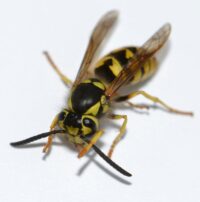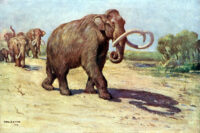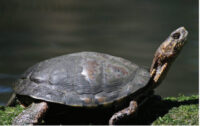Mountain lions changed my life. In the late 1990s, a measure was put on the ballot to reverse the ban on trophy hunting of mountain lions in California. I’m not against legal hunting of ducks, deer and other prey animals, but using dogs and trackers to tree and shoot a cougar for “sport” is just cruel. I was outraged. I had to do something to stop it.
I jumped in and before long became the local volunteer organizer in the statewide campaign against the trophy hunting measure Proposition 197. Back then far less was known about the life and behavior of mountain lions in Sonoma Valley or elsewhere, but I learned everything I could. These elusive, secretive cats had captured my imagination. I wrote letters and told anyone who would listen to vote no.
At a public forum I arranged at the library, Glen Ellen’s Arthur Dawson shared his close encounter with a puma on Sonoma Mountain. And told of another by his son, too. I’d only ever seen a cougar at a distance while hiking in Marin on the flanks of Two Rock Ridge. Most folks never see one.
Voters defeated Proposition 197 in Sonoma County and across the state. It was exciting to win, and the campaign work was challenging. Shortly after, I quit my job as a journalist and editor to devote the rest of my career to protecting the wild. It’s been more than two decades now!
Today, mountain lions seem less elusive in the public eye at least. We’ve seen them making the news when they show up in parks and neighborhoods in Sonoma Valley. Thanks to wildlife cameras and projects like Living with Lions based at Audubon Canyon Ranch, we know more about our local lions than ever before.
Big cat expert Dr. Quinton Martins is the first to track mountain lions in Sonoma Valley. Since 2016, he has studied the life and movements of our resident cougars. He started with “P1,” a sleek tawny female later nicknamed “super mama” for her multiple litters of kittens. Dr. Martins works with local veterinarians and residents to locate and humanely capture and equip lions with GPS collars. He also responds to mountain lion sightings and teaches people how to “puma-proof” their properties to keep livestock and pets safe.
Sadly, the Supermama cat had to be put down late last year at the ripe old age of about 15 years. She became ill and weak, and started to prey on livestock and pets. In Southern California, we recently lost the famous Hollywood cougar known as P-22 at about 12 years old after it became sick, got hit by a car and was barely surviving. This beloved puma was buried in a private tribal ceremony in the Santa Monica Mountains—the first I’ve heard of a mountain lion being honored in this way.
Most healthy mountain lions prefer deer and wild meat and rarely attack people or animals, even when living in close proximity to us. The more we move into their habitat and open space, the more often we’ll consider them a threat.
In fact, humans are more dangerous to mountain lions than they are to us. A new study co-authored by Dr. Martins found that “human-caused mortality to be more common than natural death, despite mountain lions being protected from hunting since 1990.” The study determined that “conflict with humans over livestock and collisions with vehicles were the primary causes of human-caused mortality in California mountain lions.”
We can learn more from Living with Lions and other local groups working to protect wildlife in Sonoma Valley at the Living with Wildlife Fair at Jack London State Historic Park, Saturday, May 20, 2023, 11:00 am to 2:00 pm in the Winery Ruins. The wildlife fair will feature speakers, educational booths, live birds, fun kids’ activities, and a wildlife photo gallery by local wildlife photographers and organizations.
What a wild Valley!






3 Comments